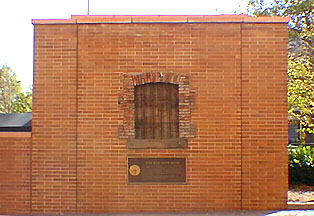
It is difficult to imagine away the tall buildings and traffic noise that dominate Duane Street and the fragment of the African Burial Ground that is memorialized by raised grass plots and a marble monument. The "Negro Burial Ground," as early nineteenth-century maps designate it, actually extends from Reade Street north beyond Duane and east as far as Foley Square.
In a sense, its existence was one of New York's most closely kept secrets. New York historians and city planners always knew it was there, though prospective real estate developers, even after they had learned it existed, preferred to forget it. In 1992, excavations for the Federal office building that straddles the site revealed the burials, hundreds of them, and their numbers made it difficult for the authorities to forget. Surprise of surprises, New York survived without another Federal office building and, though it took almost sixteen years, gained a monument as moving and distinctive the Vietnam War Memorial in Washington, D.C., whose design it echoes.
Here is a little known fact about the location. One approaching the African Burial Ground from the corner of Chambers and Elk Streets at the Surrogates Court building and walking downhill across Reade is walking along the execution track used to send slaves convicted of a capital crime to their deaths. The place of execution was on the island of Little Collect Pond, just at the western edge of Foley Square and half a block from the African Burial Ground Monument. Until Collect Pond was drained in 1829, the swampy surroundings held tanneries, a brewery, a ghetto of freed and escaped slaves, and a poor ground for their burial.
The remarkable thing is the dignified pride with which they were buried: all facing east to the rising sun and to Africa; all with bits of jewelery, stones, or beads that marked their particular region of that continent. When one most despairs of humanity, it is worth remembering the extent to which we live in hope, even after death.

